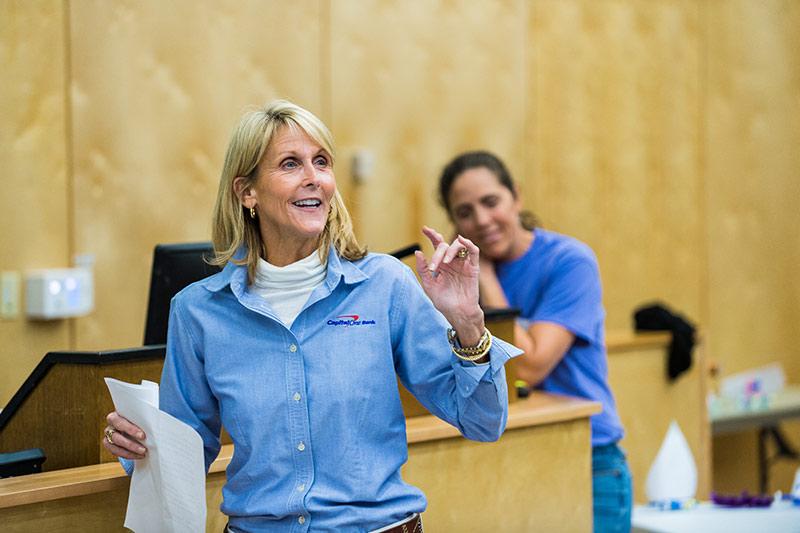Capital One lends support to girls’ STEM workshop at Tulane
Cheers filled a room in Richardson Memorial Hall on Tulane’s uptown campus Saturday as 147 middle-school girls responded to a series of questions. Did you become a mathemagician? Did you hold the tarantula? Did you touch a human brain?
The School of Science and Engineering’s Center for K-12 STEM Education hosted its 10th Girls in STEM at Tulane (GiST) program on Nov. 11, providing fifth- through seventh-grade girls the opportunity to meet and work with women role models in science, technology, engineering and mathematics (STEM) fields.
Through GiST, Tulane faculty and students offer workshops to empower girls to inquire, investigate and discover in a positive environment. The goal is to welcome the young students to careers in STEM fields by encouraging creative thinking, promoting self-esteem and increasing awareness of the opportunities that await them.
Capital One’s support of 2017-18 GiST programming is part of the company’s “Future Edge” initiative, focusing on the future and preparing the leaders of tomorrow. Southeast Louisiana regional market president Karen DeBlieux pointed out how financial services is now a technology-oriented industry.
“STEM education can inspire you to dream big and pursue knowledge that can help you develop solutions and services that people need,” she told the crowd.
This year’s program also included six middle-school teachers, who took discovery kits back to their classrooms, participating in professional development related to the workshops. Over 100 Tulane faculty, graduate and undergraduate students volunteered for the program, including members of the Tulane Society of Women Engineers and other student groups.
“At Capital One, we want to help young women like all of you in this room develop the skills you need to make positive, lasting change in a technology-driven world,” DeBlieux said. “We are proud to partner with Tulane on such an inspiring, impactful program.”
Like this article? Keep reading: Female role models make science a better fit for girls

